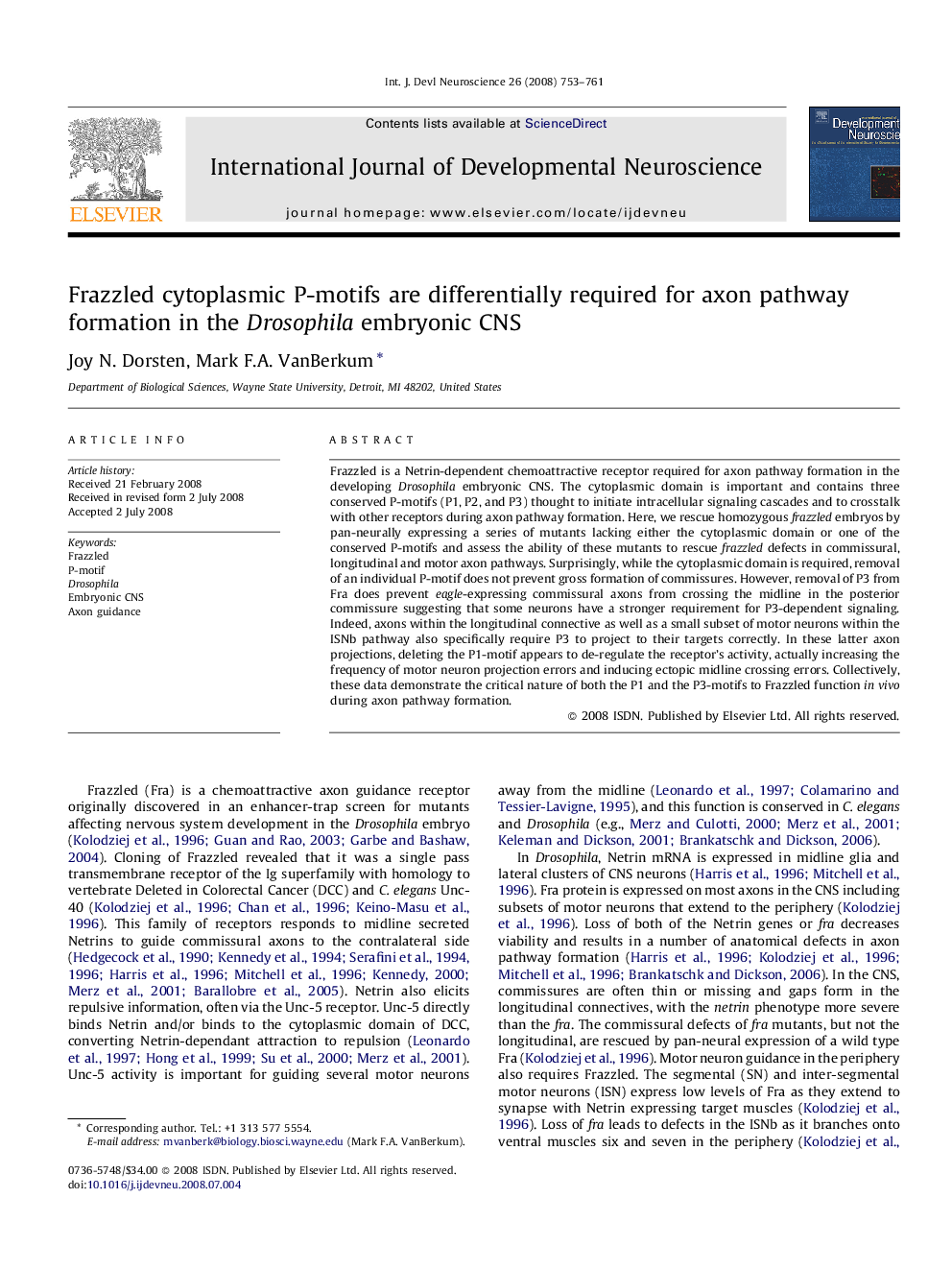| کد مقاله | کد نشریه | سال انتشار | مقاله انگلیسی | نسخه تمام متن |
|---|---|---|---|---|
| 2786992 | 1568441 | 2008 | 9 صفحه PDF | دانلود رایگان |

Frazzled is a Netrin-dependent chemoattractive receptor required for axon pathway formation in the developing Drosophila embryonic CNS. The cytoplasmic domain is important and contains three conserved P-motifs (P1, P2, and P3) thought to initiate intracellular signaling cascades and to crosstalk with other receptors during axon pathway formation. Here, we rescue homozygous frazzled embryos by pan-neurally expressing a series of mutants lacking either the cytoplasmic domain or one of the conserved P-motifs and assess the ability of these mutants to rescue frazzled defects in commissural, longitudinal and motor axon pathways. Surprisingly, while the cytoplasmic domain is required, removal of an individual P-motif does not prevent gross formation of commissures. However, removal of P3 from Fra does prevent eagle-expressing commissural axons from crossing the midline in the posterior commissure suggesting that some neurons have a stronger requirement for P3-dependent signaling. Indeed, axons within the longitudinal connective as well as a small subset of motor neurons within the ISNb pathway also specifically require P3 to project to their targets correctly. In these latter axon projections, deleting the P1-motif appears to de-regulate the receptor's activity, actually increasing the frequency of motor neuron projection errors and inducing ectopic midline crossing errors. Collectively, these data demonstrate the critical nature of both the P1 and the P3-motifs to Frazzled function in vivo during axon pathway formation.
Journal: International Journal of Developmental Neuroscience - Volume 26, Issue 7, November 2008, Pages 753–761